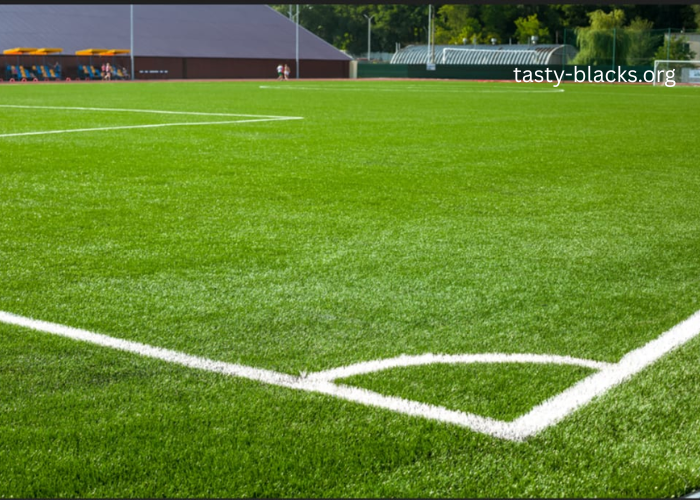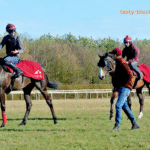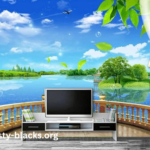Artificial turf, once a novelty in sports arenas, has evolved into a versatile and widely adopted solution for a variety of applications. From sports fields and residential lawns to commercial spaces and rooftop gardens, synthetic grass has seen a dramatic rise in popularity. This shift is largely driven by technological advancements, growing environmental concerns, and the demand for low-maintenance landscaping alternatives.
In this article, we’ll explore the history, benefits, modern innovations, and key considerations surrounding the rise of artificial turf.
What is Artificial Turf?
Artificial turf is a surface made from synthetic fibers designed to mimic the appearance and functionality of natural grass. Initially developed for sports fields in the 1960s, it has since undergone significant improvements in texture, durability, and environmental impact.
Modern artificial turf typically consists of three main layers:
- Base Layer – A foundation made of crushed stones or aggregate.
- Backing System – Supports the synthetic fibers and provides drainage.
- Grass Blades – Polyethylene or polypropylene fibers that resemble real grass.
A Brief History of Artificial Turf
The concept of artificial grass gained attention in 1966 when it was first installed in the Houston Astrodome. Dubbed “AstroTurf,” this innovation revolutionized the playing surfaces for indoor stadiums. Over the decades, artificial turf has grown beyond sports to become a staple in landscaping and urban planning.
Key Milestones:
- 1960s: Introduction of AstroTurf.
- 1980s: Improvements in aesthetics and player safety.
- 2000s: Environmental and low-maintenance benefits drive demand.
- Today: A sustainable and cost-effective alternative to natural grass.
Why is Artificial Turf on the Rise?
Several factors contribute to the increased adoption of artificial turf across both public and private sectors.
1. Water Conservation
In regions prone to drought or water restrictions, artificial turf offers a practical solution. It eliminates the need for irrigation, helping homeowners and municipalities conserve thousands of gallons of water annually and also at observateur turf.
2. Low Maintenance
Unlike natural grass, artificial turf does not require mowing, fertilizing, or re-seeding. This makes it especially attractive to property owners seeking to reduce labor and maintenance costs.
3. Year-Round Aesthetic Appeal
Artificial grass maintains its green appearance throughout all seasons, regardless of weather conditions. It’s resistant to wear, fading, and pest damage, offering long-lasting curb appeal.
4. Durability and Longevity
High-quality turf can withstand heavy use and harsh conditions for up to 15-20 years. It’s an excellent choice for sports fields, playgrounds, and high-traffic areas.
5. Environmental Impact
Although synthetic, modern turf systems are increasingly made with recyclable materials and use infill that’s safe and sustainable. Many installations reduce reliance on chemical fertilizers and pesticides.
Popular Uses of Artificial Turf
Artificial turf is no longer confined to stadiums. Its usage now spans diverse environments:
Sports Fields
Used in football, soccer, baseball, tennis, and more, turf provides a consistent playing surface and reduces weather-related game cancellations.
Residential Lawns
Homeowners use synthetic grass to create lush lawns without the upkeep, especially in areas with water scarcity.
Commercial Landscaping
Offices, malls, and hotels install turf to create welcoming green spaces that require minimal upkeep.
Pet Areas and Playgrounds
Durable and easy to clean, artificial turf is a safe, allergen-free surface for kids and pets alike.
Rooftops and Balconies
Urban dwellers use artificial grass to add a touch of greenery to compact outdoor spaces.
Innovations in Artificial Turf Technology
Today’s artificial turf is the product of decades of research and innovation.
Blade Technology
Manufacturers now produce grass blades in various shapes, textures, and colors to closely mimic natural grass varieties.
Cooling Systems
Some turf types come with built-in cooling technology that reduces surface temperatures, making them safer and more comfortable in hot climates.
Eco-Friendly Infill Options
Recycled rubber, organic cork, and sand-based infill reduce the environmental footprint and improve safety.
Permeable Backing
Advanced drainage systems prevent water pooling and support rainwater harvesting efforts.
Pros and Cons of Artificial Turf
While synthetic grass offers numerous benefits, it’s important to weigh the pros and cons before deciding.
✅ Pros:
- Water-saving
- Minimal maintenance
- Consistent appearance
- Long lifespan
- Allergy-free
- Safe for pets and children
❌ Cons:
- Initial installation cost can be high
- Heat retention on sunny days
- May require occasional cleaning
- Not biodegradable (though some are recyclable)
Cost of Installing Artificial Turf
The cost of artificial turf installation varies based on factors such as area size, turf quality, and site preparation requirements.
Average Cost Breakdown:
- Material Cost: $5 – $15 per square foot
- Installation Cost: $8 – $20 per square foot (including labor)
- Total Project Estimate: $5,000 – $15,000 for an average lawn
While the upfront cost is higher than seeding a lawn, artificial turf pays for itself over time through savings on water, lawn care products, and maintenance labor.
Environmental Considerations
Artificial turf has both positive and negative environmental implications. On one hand, it reduces water usage and chemical runoff. On the other, it can contribute to urban heat islands and may involve plastic use.
However, many manufacturers are now producing eco-conscious turf made from:
- Recycled materials
- Lead-free and toxin-free components
- Fully recyclable systems
To minimize environmental impact, opt for products certified by environmental and safety standards such as ISO 14001, EPA guidelines, or LEED credits.
Artificial Turf Maintenance Tips
Though low-maintenance, artificial grass still requires occasional upkeep:
- Rinse regularly to remove dust and debris.
- Brush the fibers to prevent matting and keep blades upright.
- Remove stains with mild soap and water.
- Disinfect periodically, especially in pet zones or high-traffic areas.
- Inspect seams and infill annually to ensure longevity.
Future Trends in Artificial Turf
The future of artificial turf looks promising, driven by sustainable innovations and growing consumer interest.
Trends to Watch:
- Smart turf with embedded sensors for sports analytics
- Turf made from biodegradable materials
- Integration with solar panels or rainwater systems
- AI-enhanced maintenance tools
As technology advances, artificial turf will continue to become greener, safer, and smarter.
FAQs About Artificial Turf
Q1. Is artificial turf safe for kids and pets?
Yes. Most high-quality artificial turfs are non-toxic, lead-free, and cushioned with safe infill materials, making them ideal for children and pets.
Q2. Can artificial turf be recycled?
Many modern turf products are made with recyclable components. Check with manufacturers for take-back or recycling programs.
Q3. How long does artificial turf last?
With proper installation and maintenance, artificial turf can last 15 to 20 years or more.
Q4. Does artificial turf get hot in the sun?
Yes, synthetic grass can become warmer than natural grass in direct sunlight. However, cooling technologies and shaded areas can mitigate this effect.
Q5. Is artificial turf suitable for all climates?
Yes. Turf is designed to withstand a wide range of climates—from freezing winters to scorching summers—without deteriorating.
Conclusion
The rise of artificial turf is more than just a landscaping trend—it’s a reflection of how technology, sustainability, and lifestyle needs converge. Whether you’re a homeowner looking to cut lawn care costs or a facility manager aiming to upgrade sports grounds, artificial turf offers a practical, beautiful, and eco-conscious alternative.
As innovation continues, expect artificial turf to play an even greater role in shaping the green spaces of tomorrow.









